Sometimes in this noisy, nerve-jangling world, you just need to get away for some peace and quiet in an exotic space.
But there’s no need to jet off to the tropics or Tibet. In churches, temples, spas, and open-air spaces all around the country, peace-seekers can find perfect — and sometimes unexpected — settings for quiet contemplation.
The Tibetan Mongolian Buddhist Cultural Center and Kumbum Chamtse Ling Monastery
Bloomington, Indiana
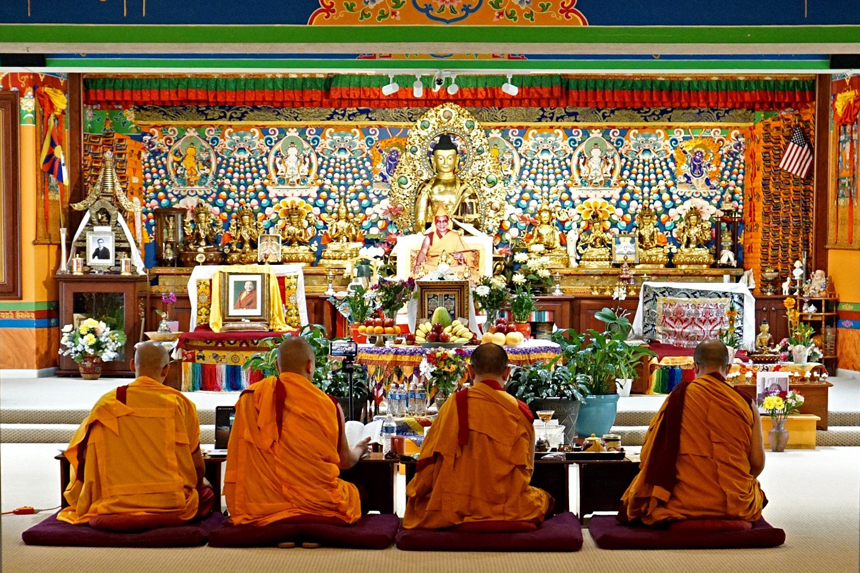
The hills outside Bloomington, Indiana, roll with conifers and broadleaf trees, with rocky streams and woodlands interrupted by wide swaths of farmland. Prototypical Middle America.
So how is it, after a short drive from downtown, that I’ve found myself somewhere in Tibet, ensconced in a Himalayan monastery?
I am cross-legged on a carpeted floor, surrounded by ornate murals depicting chapters from the life of the Buddha. The air is alive with an invisible cloud of Tibetan incense — sandalwood, myrrh, frankincense and saffron — and with the droning, mystically melodic chant of four Buddhist monks.
This is the Tibetan Mongolian Buddhist Cultural Center and Kumbum Chamtse Ling Monastery, a 90-acre preserve started in 1979 by Thubten Norbu, the older brother of the Dalai Lama, who has visited the site five times over the years. Thousands have come here to steep themselves in Buddhist teaching. Many more, like me, have come simply to experience the quiet grandeur and meditative peace of this place.
The monks sit on mulberry-hued cushions before low wooden tables laden with tea, spices — and a laptop for live streaming the ceremony. They sing their daily meditation in a tight, three-part harmony of Eastern modality. I don’t understand a single word being sung, and the multi-tiered theology of Buddhism is utterly foreign to me. Still, I politely refuse the invitation to read along in a prayer book available at the front door. I close my eyes, feel the vibration of those rhythmic chants, and layer my own thoughts and prayers on the sensations that surround me.
The Tibetan center is open to everyone, and it is just one of countless vortexes of serenity that await peace-seekers around the country. In churches, temples, spas, and open-air spaces, visitors can find perfect — and sometimes unexpected — settings for quiet contemplation.
The Meditation Room, Aspira Spa at The Osthoff Resort
Elkhart Lake, Wisconsin
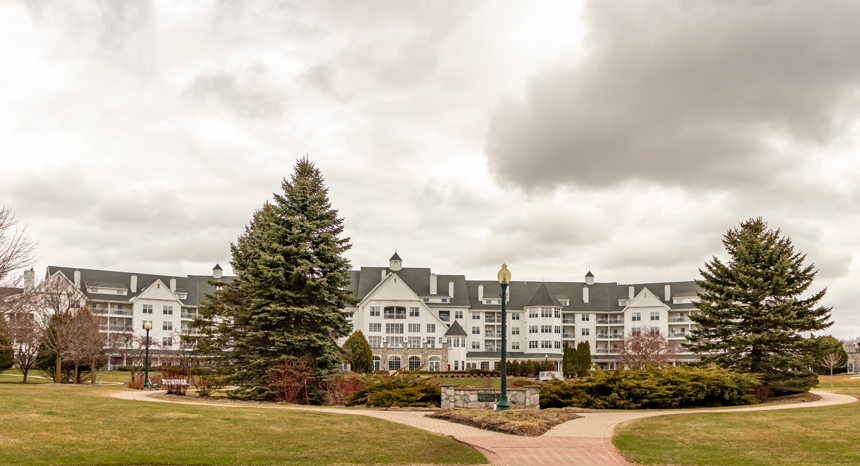
The entrance is a narrow arch, and the light inside is so dim I can barely find my way to the stone bench that lines the periphery of this circular room. At one end, gently laughing water trickles down a 15-foot-high stone wall, then into a short, pebbled channel flowing into a small round pool at the room’s center. I could close my eyes and set my mind adrift, but in this dim, contemplative paradise, the subtle sights are half the experience.
Surprisingly, I am not at some world-famous top-tier spa: I’m in the 100-year-old Osthoff Hotel, on the shores of Wisconsin’s Elkhart Lake. I’m not a massage guy, and I’m certainly not one for a pedicure, but this room — available to anyone with a ridiculously affordable $45 day pass — is one of the most stress-evicting environments I’ve ever experienced.
Beyond that arched entry, the hotel’s Aspira Spa has 22,000 square feet of space. In here, the welcoming darkness seems to stretch into infinity.
Heinz Memorial Chapel
University of Pittsburgh, Pittsburgh, Pennsylvania
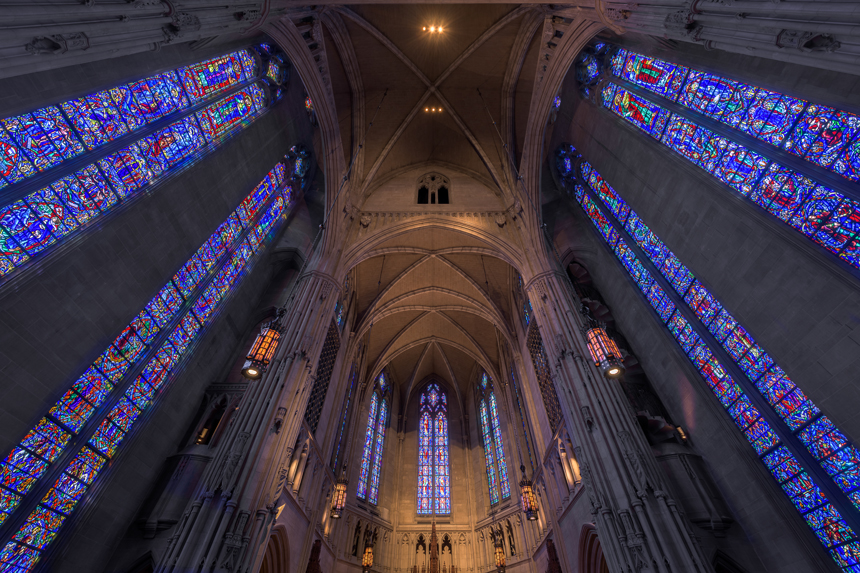
There’s no shortage of gothic churches in America; Heinz Memorial Chapel is one of the very few that finds a way to be reassuringly intimate while retaining the soaring grandeur of the Medieval style.
Just 55 feet wide inside, viewed from its narrow central aisle the space actually appears higher than its 146-foot length, with the arched ceiling seemingly floating atop the chapel’s floor-to-ceiling stained glass windows.
Find yourself a quiet pew, set your eyes half-closed, and experience the unique sense of floating in a gently turning kaleidoscope, or suspended above a million-colored galaxy.
If you are especially lucky, the chapel organist will be on hand to accompany your revelry. You just may want to stay until closing time.
The Parthenon
Centennial Park, Nashville, Tennessee
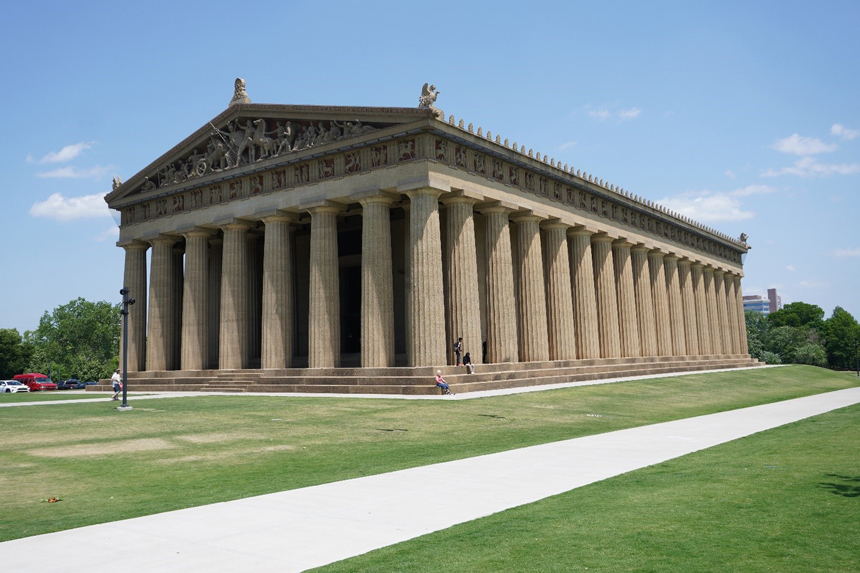
Some building exteriors are designed to excite; others to portray power. The Parthenon of Greece, perhaps more than any structure in history, was designed to instill a sense of balance and peace. An explosion in 1687 nearly reduced the original Parthenon to ruins, but more than a century ago, in — of all places — Nashville, Tennessee, a near-perfect replica of the ancient temple rose on the grounds of the Tennessee Centennial Exposition.
So accurate is Nashville’s Parthenon that engineers from Greece, where restoration on the first version is ongoing, have traveled to Tennessee to study the replica’s details.
On a warm, sunlit day, find yourself a spot on the expansive grassy areas surrounding Nashville’s Parthenon. As a gentle breeze and the distant sounds of playing children drift across the lawn, lose yourself in the perfection of the massive Doric columns, tilted ever so slightly inward, swollen at their middles, spaced apart at varied distances to create, ironically, an illusion of perfectly straight symmetry.
The Greeks contemplated the Parthenon as a way to grow closer to their gods. For us, those colonnades and gentle curves disguised as straight lines are an invitation to gently, quietly, connect with our own creativity.
Aramai Point
Pacifica, California
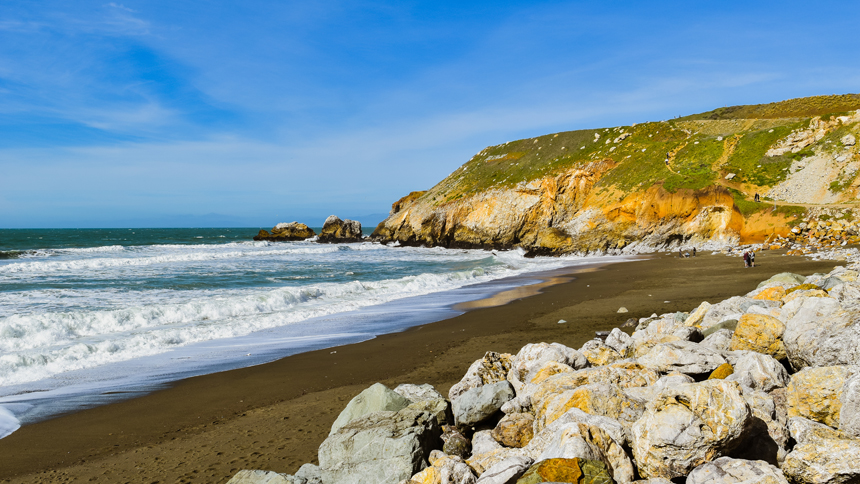
A few hundred feet below me, the Pacific Ocean crashes to the rocky shore on three sides. To the north, a procession of breaking waves, each one nearly a mile long, stretches all the way to Mori Point. And to the southwest, the afternoon sun, glinting off the sea, sets the plunging northern California coastline and some jagged, rocky islands, in dark silhouette.
San Franciscans famously head north to the coastal forests or far south to Big Sur for the inspiration of nature, but here I am, just 17 miles south of the Golden Gate and about eight from the city’s airport, listening to the distant beat of the waves and the rustle of the salt breeze whipping up from the rocks at my feet. I find a small, stony outcrop to sit on, and then I remain still.
Aramai Point in Pacifica was, until recently, known as Rockaway Headlands. The name has been changed to commemorate the historic presence of a people who lived here for thousands of years. If you linger long enough, letting the waves whisper their long-ago stories, you’ll almost sense the Aramai are here still, fishing these waters, hunting these hills.
The Very Large Array
National Radio Astronomy Observatory, Socorro, New Mexico

If it’s the Big Things you want to meditate on, then there’s no better place to do that than this expanse of land, a two-hour drive from Albuquerque, where 28 radio antennas — each one 82 feet wide — point skyward, night and day, probing the farthest reaches of the universe.
Sitting on a network of three radiating railroad tracks — each one 13 miles long — this is the same radio telescope that inspired Jodie Foster’s astronomer character in Contact. But you don’t need to know your galaxies from your gamma rays to find inspiration at the Very Large Array. To sit on the shoulder of Old Highway 60 at dusk, watching the telescope’s shadows crawl across the land and seeing the stars, one by one, blink into view, is to reflect on how very big the cosmos is — and how very small we are.
And don’t be surprised to spot some pairs of eyes peering back at you over the wire fence. It’s just one of the many head of cattle that wander these parts.
Perhaps he’s meditating on you.
Become a Saturday Evening Post member and enjoy unlimited access. Subscribe now


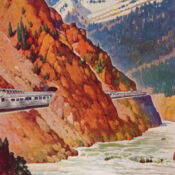

Comments
Really love this feature, Bill. I’d encourage you to branch out to continue other features in addition to film! Love all of your selections here for enlightened Americans actually seeking quiet contemplation for inner peace and living life on a higher plane than the majority.
Practically speaking for myself geographically, Aramai Point in Pacifica, Ca. would be the closest, and is an ideal destination otherwise. The sight, sounds and scents of the crashing water and air alone are very therapeutic.
If I had to pick one, I’d really like to go to the Buddhist Cultural Center in Bloomington, IN. for all the positive reasons in the paragraph. I’ve never been to Indiana, and know it’s a beautiful state to see otherwise while there. The picture here (top portion) reminds me of the Krishna Bhakti art I really love.
You can easily see it online in George Harrison’s ‘Give Me Love’. Obviously he was transformed by the Beatles 1968 trip to India (covered by the Post that year) and was reflected in his music perhaps more than the other three in their 1970 and later solo work. The image of Christ from 2:51-3:03 is very powerful and healing. Thank you.